Understanding Ball Python Morphs
Introduction
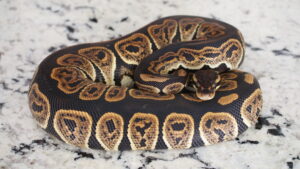
Ball python morphs have become increasingly popular among reptile lovers due to their unique and captivating appearances. These morphs are the result of selective breeding, which has led to a wide range of color and pattern variations in ball pythons. From vibrant yellows and oranges to striking blacks and whites, there is a morph to suit every reptile enthusiast’s taste.
While the visual appeal of ball python morphs is undeniable, it is crucial to remember that proper feeding is essential for the health and well-being of these reptiles. Providing a balanced and nutritious diet is key to ensuring their growth, development, and overall vitality.
In this article, I will share some valuable tips and tricks to help you navigate the world of feeding ball pythons. Whether you are a new owner or an experienced reptile enthusiast, these insights will assist you in providing the best care for your ball python.
Understanding Ball Python Morphs
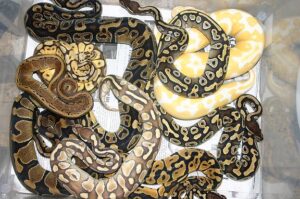
Ball python morphs are the result of selective breeding, where specific genetic traits are passed down from one generation to the next. These traits manifest as unique color and pattern variations in the snakes’ scales, setting them apart from their wild-type counterparts.
Compared to wild-type ball pythons, which have a more subdued appearance with brown or black scales and a few small markings, morphs exhibit a wide range of vibrant colors and intricate patterns. This diversity is what makes them so appealing to reptile enthusiasts.
There are numerous types of ball python morphs, each with its own distinct characteristics. Let’s explore some of the most popular ones:
1. Albino Morphs
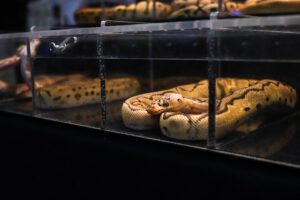
Albino ball pythons lack the pigment melanin, resulting in a striking white or yellow appearance. Their eyes are typically red or pink, adding to their unique allure. One well-known albino morph is the “Piebald” ball python, which features large patches of white on its body.
2. Pastel Morphs
Pastel ball pythons have a lighter base color and often display enhanced contrast between their scales. This morph intensifies the natural colors of the snake, resulting in a more vibrant and eye-catching appearance. The “Banana” morph is a popular example of a pastel ball python.
3. Pied Morphs
Pied ball pythons exhibit a unique pattern where large patches of white or light-colored scales are interspersed with the snake’s base color. This creates a striking contrast and gives the impression of a “pied” or piebald appearance. The “Axanthic Pied” morph is a notable example of this pattern.
4. Clown Morphs
Clown ball pythons have a distinct pattern that resembles a clown’s face, with bold markings around the eyes and a clean, bright background color. This morph is highly sought after for its captivating and unique appearance. The “Killer Clown” morph is a popular variation of the clown morph.
These are just a few examples of the many ball python morphs available in the reptile market. Each morph has its own dedicated fan base, and breeders continue to develop new and exciting variations.
By selectively breeding ball pythons with desirable traits, breeders have created a diverse and visually stunning array of morphs. Whether you prefer the bold patterns of the pied morph or the vibrant colors of the albino morph, there is a ball python morph to suit every reptile lover’s taste.
Feeding Schedule and Frequency
Establishing a proper feeding schedule is crucial for the health and well-being of your ball python. The frequency and size of meals will vary depending on the age and size of your snake. By following a consistent feeding routine, you can ensure that your ball python receives the necessary nutrients for growth and development.
Recommended Feeding Schedule
For young ball pythons, it is recommended to feed them once every 5 to 7 days. As they grow older and reach adulthood, the feeding frequency can be reduced to once every 7 to 10 days. This schedule allows for proper digestion and prevents overfeeding, which can lead to obesity and other health issues.
It’s important to note that individual ball pythons may have slightly different feeding requirements. Some snakes may thrive on a slightly more frequent feeding schedule, while others may do well with slightly longer intervals between meals. Observing your snake’s behavior and body condition will help you determine the ideal feeding schedule.
Consistency is Key
Consistency in feeding is essential for ball pythons. By establishing a routine, you can help your snake feel secure and reduce stress during feeding time. Snakes are creatures of habit, and they thrive when they know what to expect. Aim to feed your ball python at the same time and on the same day each week.
Consistency also extends to the type and size of prey offered to your ball python. Stick to a diet of appropriately sized rodents, such as mice or rats, that are proportional to your snake’s size. Avoid sudden changes in prey size or type, as this can cause digestive issues. Gradually increase the size of the prey as your snake grows to accommodate its changing dietary needs.
Determining Feeding Frequency
While the recommended feeding schedule provides a general guideline, it’s important to consider your ball python’s individual needs. Factors such as metabolism, activity level, and overall health can influence the frequency of feedings.
One way to determine the appropriate feeding frequency is by monitoring your snake’s body condition. A healthy ball python should have a well-rounded body with a visible waistline. If your snake appears too thin or overweight, you may need to adjust the feeding frequency accordingly.
Additionally, consider the size of the prey in relation to your snake’s girth. A properly sized meal should create a slight bulge in the snake’s body, indicating that it has been adequately nourished. If the prey leaves a significant bulge or causes difficulty in digestion, you may need to decrease the size or frequency of feedings.
Remember, it’s always better to slightly underfeed than to overfeed your ball python. Overfeeding can lead to obesity, which can have detrimental effects on your snake’s health and lifespan.
By following a recommended feeding schedule, maintaining consistency, and monitoring your ball python’s body condition, you can ensure that your snake receives the appropriate amount of food for optimal health and well-being.
Choosing the Right Food
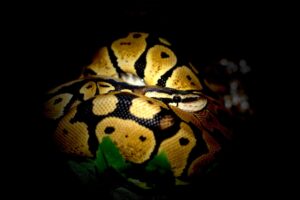
When it comes to feeding your ball python, it’s important to provide a diet that meets their nutritional needs. The primary food source for ball pythons in captivity is rodents, such as mice and rats. These prey items offer the necessary nutrients and are readily available in most pet stores.
Types of Food
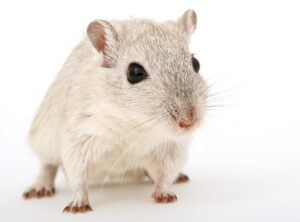
1. Mice: Mice are a common food choice for ball pythons, especially for younger snakes. They come in various sizes, from pinky mice for hatchlings to adult mice for larger snakes. It’s important to choose the appropriate size of mouse based on your snake’s girth to ensure they can swallow it comfortably.
2. Rats: As ball pythons grow, they may require larger prey items, such as rats. Rats are available in different sizes, ranging from rat pups to adult rats. It’s crucial to select the right size of rat that matches your snake’s size and feeding capabilities.
3. Birds: In addition to rodents, some ball pythons may accept small birds as part of their diet. Quail and chicks are commonly offered to ball pythons, providing a source of variety in their diet. However, it’s important to note that birds should not be the sole food source for ball pythons, as they may lack certain essential nutrients.
Variety for Nutritional Balance
Offering a varied diet is essential to ensure that your ball python receives a balanced nutritional intake. Feeding a variety of prey items helps prevent nutritional deficiencies and promotes overall health. By rotating between mice and rats, you can provide different levels of fat and protein, mimicking the natural diet of ball pythons in the wild.
Additionally, incorporating other food sources, such as birds, can further enhance




